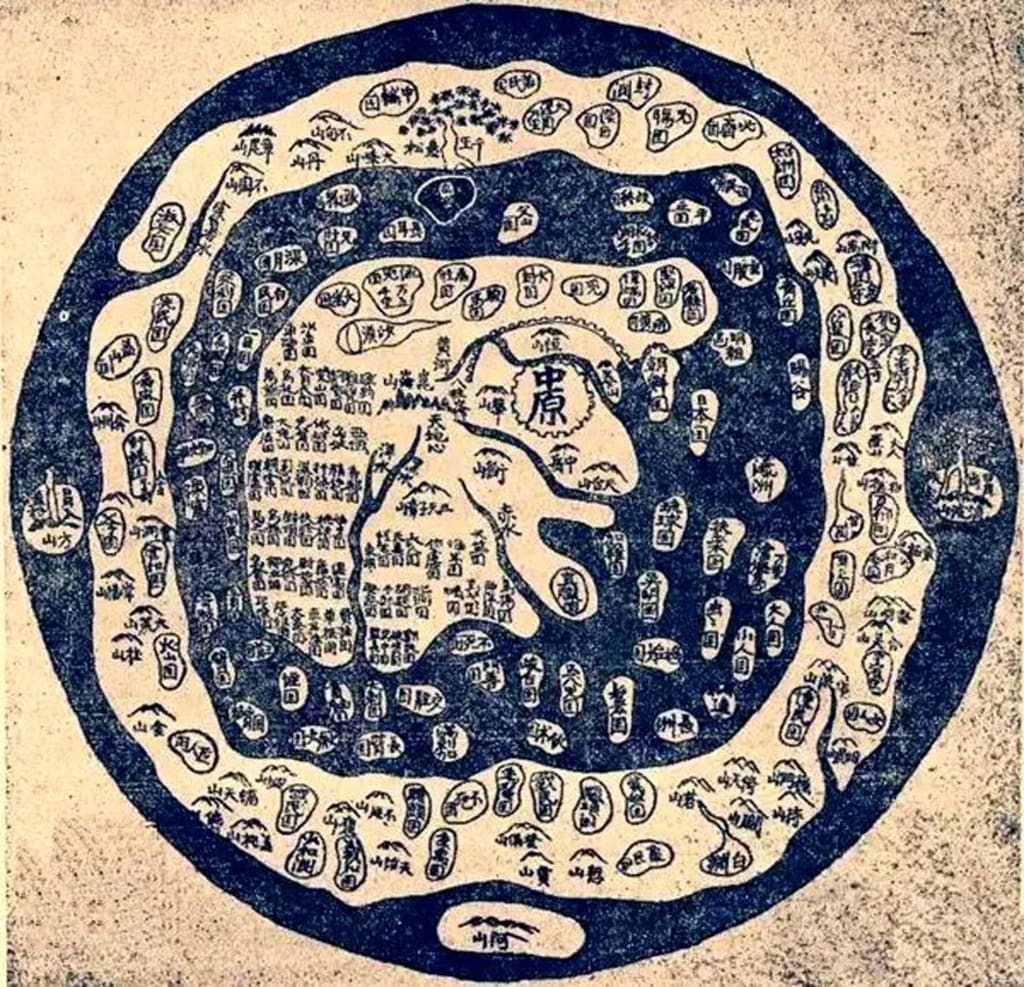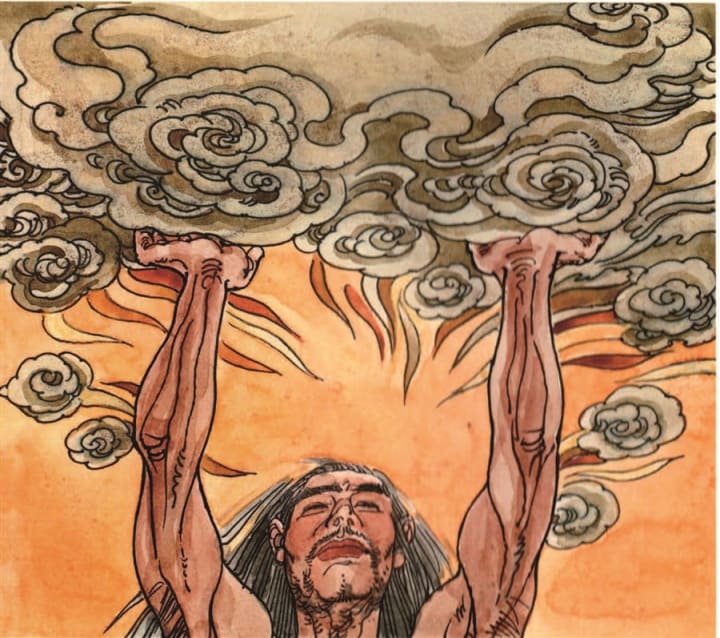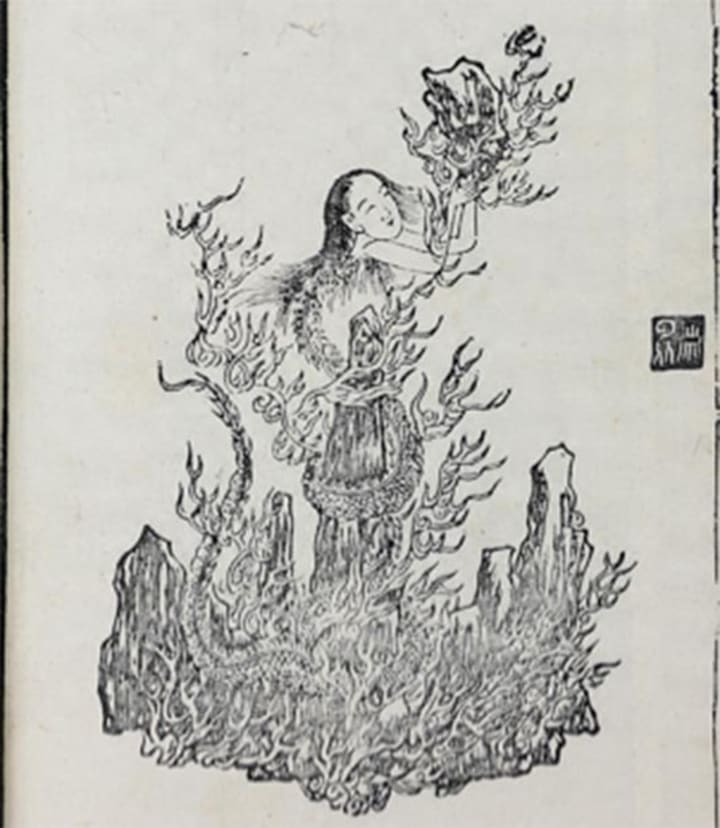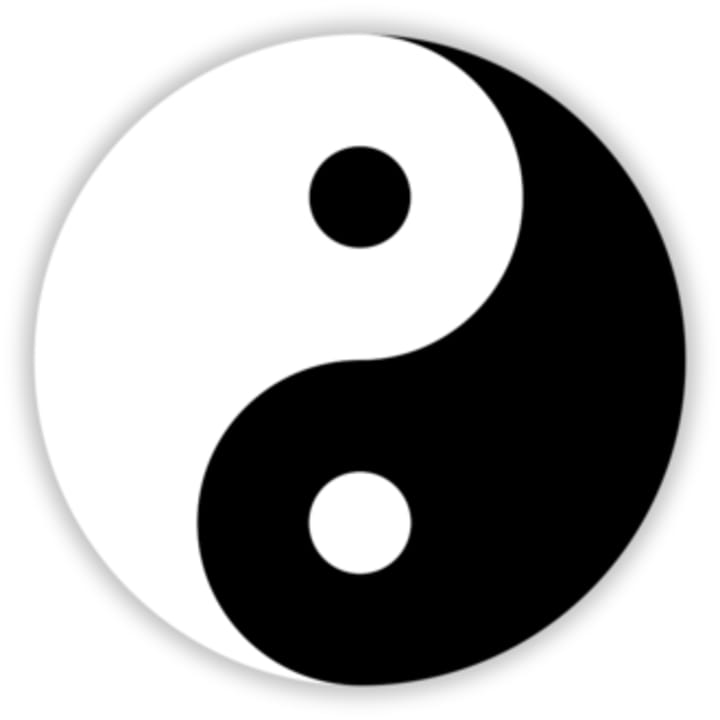Where Do We Come From?
Chinese Creation Myths

For those of you who do not know, I’ve always been fascinated by the east, particularly China and its culture. Back in college, I even took some Mandarin. While most of the language fell out of my head from lack of use, much of the rich culture that I learned about has remained. I recently delved into Chinese mythology once more and realized that these tales are not only incredibly fascinating, but they also can help us understand a culture that can seem incredibly foreign to our western sensibilities.
Ancient man created stories to help understand the world around them and the Chinese are no different. There are a couple of things to keep in mind when discussing Chinese mythology though. The first is that China is a very large area, especially when we are considering the time period. There were no cars or planes to zip you across the vast tract of land that we now call China. They were (and still are) a diverse group of people with a variety of beliefs and traditions. Additionally, unlike with Greek and Roman mythologies that westerners are more accustomed, they did not write them down until much later. Instead, these tales are compiled from allusions in other spiritual and historical texts, but also through word of mouth and tradition. Therefore, the stories that I will discuss here, should not be considered a complete description of traditional Chinese beliefs, but instead a small sampling.
I thought that I would take us all the way back to the beginning, to the Chinese creation myths…
Pan Gu and the Egg
In the beginning, when the universe was still jumbled and fluid, it resembled a large egg filled with darkness and chaos. At its center the first living creature came into being and he named himself Pan Gu. Thousands of years passed as he dreamed about a beautiful world and grew to understand the balance of the opposing forces which floated with him. One day, he finally reached maturity and awoke. With great forcefulness, he yawned and stretched, breaking the egg (some versions assert that he had more trouble and had to use a tooth, which turned into an axe). The delicate, lighter parts rose and formed the sky, while the solid, heavier parts formed the ground beneath his feet.
Looking around, he thrilled at the light and order that he had brought to the universe, but worried that the heavens and earth would come crashing back together and chaos would return. To prevent this from happening, he placed himself between the opposing forces and pushed with all his might up and down, wedging his considerable mass between them. He found that each day, he grew, as did the distance between the two parts. For several thousand years, he kept this up until he was satisfied that the two would not mix again. Then, being old and weary, he laid down to rest, but would never again wake. After he died, his body miraculously transformed into the Earth that we know now: his head became the mountains, his eyes the sun and moon, his blood the rivers, his tears and sweat the rain, and so on.

There are those who still honor the great Pan Gu for his contributions to Heaven and Earth. Some attribute the race of man to his sacrifice, as we grew from the parasites that once lived on his body, but others attribute it to Nu Wa…
Nu Gua and Lonely Sculpting
(Also spelled Nu Wa or Nu Kua) Many beings sprung from Pan Gu’s remains, including other divine beings and giants. Na Gua, a powerful Goddess with a body of a human and lower half of a snake, enjoyed spending time on Earth and bringing further order to it. As she wandered, she felt that it was too quiet and sparsely populated. She wished to have others with which to share her thoughts and feelings. She sat on a river bank one day and began to absentmindedly sculpt a being like her, but with legs on which to stand upright.
To her surprise, when it was completed, it sprang to life. She began to sculpt more and more until she grew tired. Only then did she use her godly powers to create more. She used a stick to gather mud and then vigorously shook the branch, spraying hundreds of droplets each of which grew into a human. She decreed that the human that she had shaped with her hands should be the rich masters of the world and those from the mud droplets should be the humble workers who would lead ordinary lives. She also divided them up into men and women with instructions to multiply until they covered the Earth and no longer feared extinction.
Nu Gua Fixes Everything… Well, Almost
The Goddess watched over humanity and was incredibly protective of it. People prayed to and honored her and it was many years until the people of Earth encountered anything but joy and peace. Though there is still argument over what the dispute was about, the water and fire Gods (Gong Gong and Zhurong, respectively) began shouting at one another and then it came to blows. They fought for days without either gaining the advantage and the sky shook from the force of it. Then on the fourth day, Gong Gong began to tire and Zhurong threw him from the Heavens.
When Gong Gong realized his defeat, he knew that he could not face the other Gods again. He resolved to end his own life and, seeing a great mountain in the distance, ran full tilt, head first into it. Not only was he still alive, but the mountain cracked and could no longer support the sky. Great pieces of the sky began to pour upon the earth, creating fiery pits, floods of dirty water, and the destruction of humanity’s crops.
Upon seeing her people stricken by such torment, Nu Gua knew she had to do something. Despite her old age, she began work immediately. She took different colored pebbles from a river bed and melted them down to patch the sky (This is why the clouds are different colors). She then took reeds and burned them, using the ash to snuff the fires. Unconvinced that her efforts were enough to prevent the heavens from collapsing, she hunted a giant tortoise and chopped off its legs. She used these to further support the heavens. Her work was not perfect though. This is quoted as the reason that all rivers flow east in China and also the reason why the pole star is no longer directly overhead (the entire experience tilted the Earth).

Once her work was done, she wished to calm the people. She took thirteen stalks of bamboo and fashioned them into a flute. Everyone who heard her music grew calm and she became a Goddess of Music. The events took their toll on Nu Gua though. Afterwards, she passed away and her body transformed into hundreds of fairies.
With these tales, we see hints of traditional Chinese culture. There is a striving for order by these great beings. In Confucianism, one of the great Chinese philosophies (more in my next article), there is a great emphasis on the need for order. It is deep within the culture and that desire can still be seen today. Both Pan Gu and Nu Gua spend their lives creating greater order in the world and eventually give their lives in pursuit of it.
Pan Gu also shows us that from a very early time, balance in all things was prized. In some illustrations, Pan Gu is depicted with the yin yang, an ancient symbol that many still adhere to today. It emphasizes the need for balance in all things.

In Nu Gua’s story, we can also see a reasoning for the ancient aristocracy to hold power over the rest. They were sculpted by hand, with more care, and therefore had reason to lord over their subordinates.
I hope you enjoyed this teaser into Chinese mythology. The tales are rich and full of life. I also enjoyed the Tales of the Five Emperors and those of the dragon Yu, but rest assured, there are far more than just those.
Works Cited
Latini, Davide, trans. “The Creation Myths.” Essay. In Chinese Myths & Tales: Epic Tales. London: Flame Tree Publishing, 2018.
The Editors of Encyclopaedia Britannica. “Pan Gu.” Encyclopædia Britannica. Encyclopædia Britannica, inc., February 11, 2020. https://www.britannica.com/topic/Pan-Gu.
Zhang, Qian. “The Myths That Shaped China,” February 9, 2018. https://archive.shine.cn/feature/art-and-culture/The-myths-that-shaped-China/shdaily.shtml






Comments
There are no comments for this story
Be the first to respond and start the conversation.